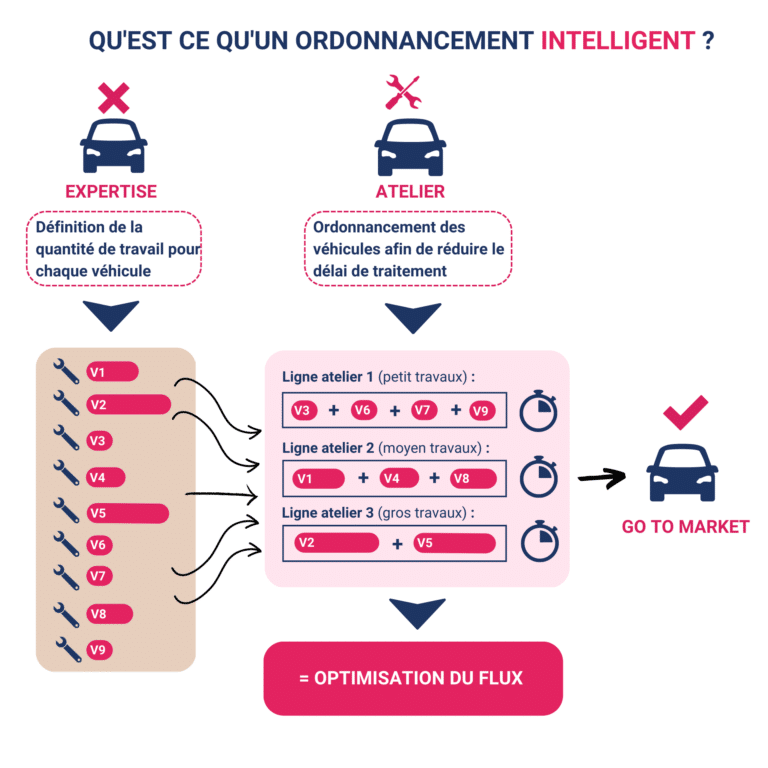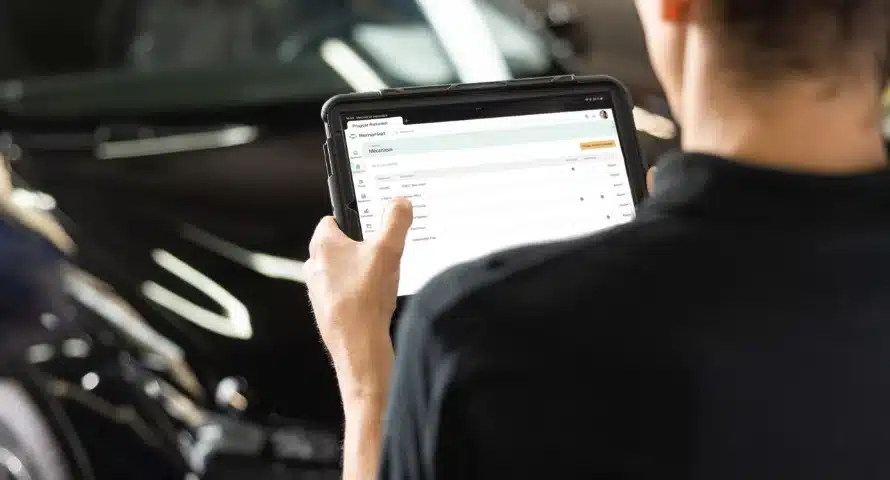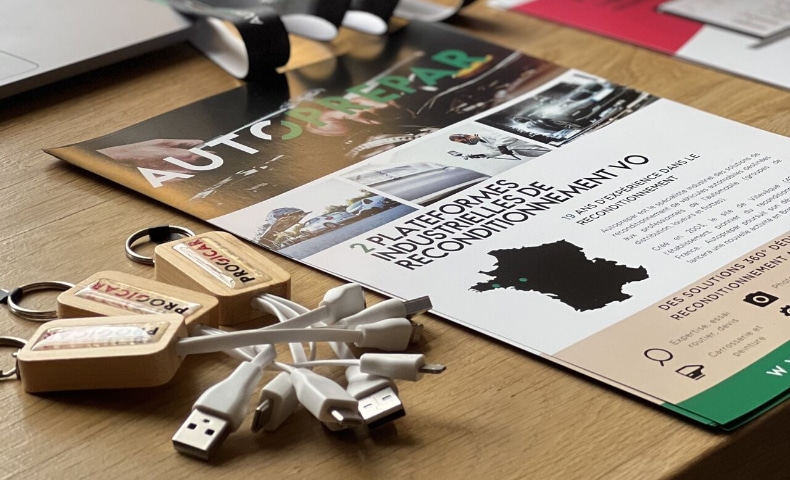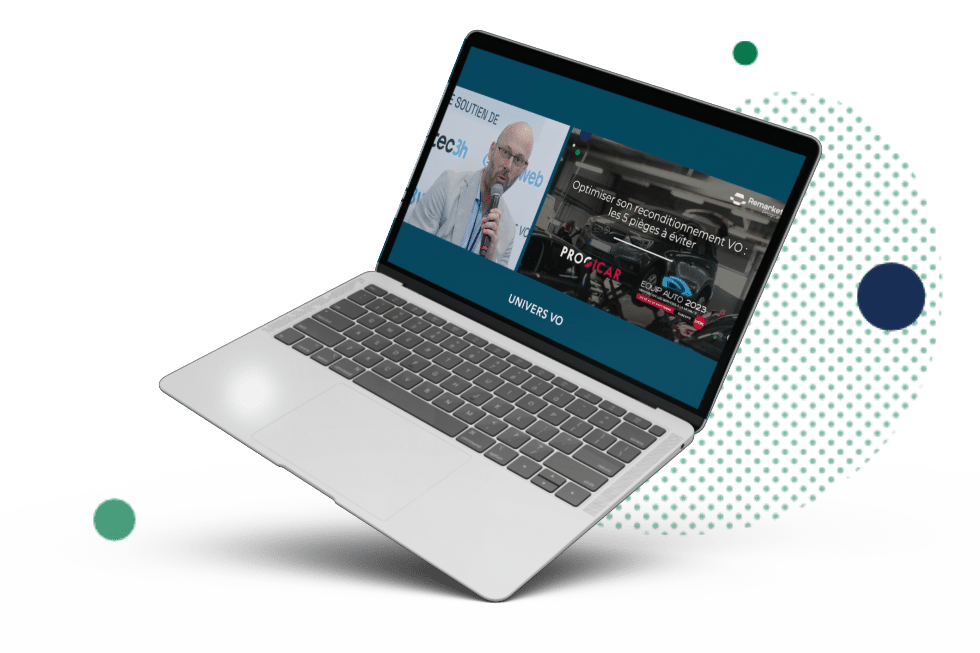Managing a used vehicle reconditioning center in an efficient and optimized way is the challenge for their managers. In a context of strong tension in the used vehicle market, it has become imperative to process a maximum number of vehicles in a minimum amount of time while respecting quality standards. In addition, the anticipated tension on the buy-back prices of vehicles at the end of the leasing period pushes reconditioning centers to work on their profitability.
The organization of these factories is clearly not comparable to workshops or garages where different after-sales tasks are carried out according to the arrival of vehicles. It is no longer a question of thinking in terms of cars but of flows. It is therefore essential to equip the center with the right tools, and in particular with high-performance management software that respects this logic.
In order to achieve their objectives, plant managers must work on standardizing their activity. This requires an industrial organization and a digital tool capable of scheduling each step: from vehicle collection to appraisal and from workshop passage to invoicing.
The question then arises as to which key functionalities should be included in a good tool for managing an OVR center. This is what we will see in this article.
The essential features for a VO reconditioning center management software
A tool that integrates the entire processing chain
Much more than a simple tool for managing work, tallying or invoicing, the software must allow for complete management and an overview of the entire vehicle activity: from the vehicle order and its reception, as well as the management of the parking lot, to the diagnosis, expertise, costing, PR supply, operations and verifications.
Thus, the plant ends up with a single tool capable of giving visibility on all operations and on the performance of the site. This simplifies work, automates tasks, and allows the players to focus on their added value without wasting time on paperwork or repeated exchanges.
A tool based on the intelligent scheduling of VOs
Scheduling is undoubtedly one of the fundamental principles of an efficient vehicle reconditioning center. It consists in prioritizing the order of passage of the vehicles according to the various work to be carried out in order to reduce the processing time, to meet the customers' deadlines while maximizing the flow of reconditioned vehicles.
The heart of the complexity of a used car reconditioning plant lies in the workshop: if the stages of expertise, aesthetics, technical control or photo workshop take about the same time for each vehicle, the mechanics, bodywork and paintwork present a great variability. We go from a "per vehicle" logic for all the work in the first category, to a "work hour" logic for the second.
A typical risk is then to block the whole factory by sending vehicles requiring important work to the workshop at the same time: downstream, the work will be lacking, and upstream, the intermediate stocks of vehicles will accumulate.
As you can see, scheduling your vehicles can be a real headache! This is why a good software package must take into account different indicators in order to prioritize and support the workshop manager's decision making.

Scheduling involves two axes in the development of the software: the collection of information concerning the vehicle, the customer and the workshop situation (1) and the processing of this data by the software in order to suggest a vehicle scheduling (2).
First of all, it is the availability of the right information at the right time that makes it possible to prioritize the vehicles. The workshop manager, the key man in the scheduling process, must always know which vehicles are arriving in the workshop, which jobs are associated with them, which islands are available, etc. All this information is vital for prioritization and it is inconceivable that he would waste a lot of time looking for it.
Then, an efficient software provides decision support functionalities, suggesting for example the relevant vehicles to bring into the workshop, based on this information, the estimated work and the contractual context with the customer for example. Of course, the final decision must remain in the hands of the workshop manager. Having an intelligent scheduling system means increasing the capacity of the workshop.
Software that respects and adapts to the plant's organization
To be clear, any reconditioning center handling a significant volume of used vehicles per year (over 3,000) must adopt an industrial organization. That is to say, it must structure its center, its tools and its employees in such a way as to minimize downtime and maximize its used vehicle flow. Without this fundamental principle, the performance of the reconditioning center will probably not be achieved.
Therefore, the software adopted by the plant must also be structured, designed and developed in the same way. The progress of each vehicle in the reconditioning process must be replicated and visible in the software.
That said, each used car reconditioning plant has its own work organization, its own methods, its own price lists, a different number of employees, specific subcontractors or particular constraints. It is then imperative to turn to a software editor able to adapt the product to all these factors, without which both the software and the plant could not work at full capacity.
VO preparation plant, customers, subcontractors: specific access to information for each stakeholder
The organization of a VO plant necessarily involves various stakeholders, each of whom has a role to play:
The used vehicle preparation plant and its employees (operations manager, workshop manager, workers, etc.): they are responsible for reconditioning used vehicles according to customer expectations and deadlines.
The customer: the one who entrusts his VO reconditioning in the case of outsourcing of this work. He gives the orders on the work to be done and validates the estimates.
Subcontractors: when certain tasks are handled by external service providers (e.g. bodywork removal). There are then contractual relations between the VO factory and the service provider.
A good software must then take into account the actors and their role so that each one can both inform the others on the activity but also access the information they need.
Thus, the principals control the reconditioning, the workers carry out and monitor the various stages of the process, the subcontractors provide the estimates and the work, and finally, the customers receive real-time information on the condition of their vehicles.
Finally, we understand that accessing and sharing information in real time is an important issue for users because it improves the quality of work and the relationship with all employees.
This ecosystem must be an integral part of the control solution chosen by the VO preparation plant, without which the software would be incomplete and the plant management less efficient. This can mean individual access to the tool depending on the person's role or the development of several interfaces.
A software that integrates performance indicators (KPIs) to support decision making
Anticipation and ongoing adjustments are the key to ensuring that the consequences of the passage of each vehicle on the rest of the industrial chain are mastered at every stage.
A sustainable VO reconditioning plant is a structure that has a positive financial balance and is able to cover its own investments. Economic performance is therefore at the heart of the center's management. Thisis why it is important to define performance indicators and to monitor their evolution. The indicators on the global performance can be: the time of flow, the yields, the VO volume, the quality controls, the follow-up of the complaints and the exchanges, ...
In addition, it is important to monitor more operational indicators that allow for optimal decision making in the field.
This includes information about the vehicles and their history, the operators' scores on tasks performed or to be performed, as well as any problems detected, which can be used by the journeymen and the workshop manager. It also includes the time since a vehicle entered the center and when it must be delivered. The information concerning the follow-up of the orders of the PR (spare parts) can also be relevant to be more productive.
These different elements are essential to ensure good VO management and effective decision-making.
Assessment: which software to choose for an efficient management of its VO factory?
In the end, very few software solutions take into account these different characteristics necessary for reconditioning centers handling large flows of used vehicles. On the market, the software solutions proposed only allow a part of the functionalities mentioned above and the reason is simple: very few editors have the hindsight on the performance of a reconditioning plant with an industrial philosophy.
How does Progicar Remarket support you in managing your VO preparations ?
Progicar Remarketwas developed based on the 20+ years of experience of a proven remanufacturing center. This is why Progicar Remarket is the only SaaS software on the market that can be adapted to each plant by integrating: the complete processing chain, intelligent scheduling, KPIs, centralized information and specific access for the customer.
- Software that prioritizes the scheduling of the VO flow
Only the Progicar Remarket control software integrates advanced scheduling concepts on the market. The workshop manager coordinates and validates the scheduling of the used vehicle flow thanks to the information on the work to be done and the customer deadlines provided by the software. The workshop manager thus has a real tool on which to base the scheduling of his vehicles.
- A modular and scalable software
Progicar Remarket is suitable for any used vehicle reconditioning center since it is adaptable to the center's operation. The software can be adapted to the organization of each plant: it is possible to add or remove steps in the processing flow as well as to modify the order. The pricing grids can be customized and the particularities of each stakeholder integrated. Thus, the process defined upstream by the factory is respected. This is done with the help of an engineering study carried out beforehand by Progicar and in consultation with the teams.
Also, continuous improvement is the watchword at Progicar. Our teams are constantly interacting with the different business lines in order to optimize the tool and add innovative features.
- Software that puts customers at the heart of the refurbishment process
The tool has been designed to provide different accesses for the whole ecosystem: the actors of the factory, the subcontractors and the customers. As a result, the latter also have a specific connection interface allowing them to follow in real time all the information concerning their vehicles: the tasks to be carried out, the state of progress of the vehicles or even alerts in case of blockage of a vehicle or a line. This platform is also interactive for the customer since he will receive directly the quotes online that he can modify if necessary and then validate via his customer interface. The circulation and sharing of information are thus optimized and the preparation of the VOs will be accelerated.
The availability of all this information to customers in real time by the factory is a guarantee of satisfaction and security for the former and a time-saver for both parties.
- A performance-oriented software
It is by basing itself on key indicators and notions that Progicar Remarket stands out. Beyond being a management tool and indicator, it is also a performance indicator, allowing the team leader to react quickly to flow variations, to be warned in case of any problems and especially to prioritize his scheduling. With the "Indicators" menu of Progicar Remarket, all the centers will be able to follow the evolution of their activities by monitoring the predefined KPIs and thus anticipate and take optimal decisions.
In conclusion, Progicar Remarket is a complete, industrial tool that integrates the notions of flow, which are essential for maintaining a sustained rate of VO preparation.
To learn more about this tool, feel free to schedule a demo with our team!




